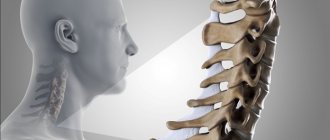Effectively
improvement after 1 session
Fast
from 2 to 5 sessions
Reliable
eliminating the cause of the problem
Price
15,000 ₽ per session
Get a free specialist consultation
Find out how to get rid of your problem forever
Sign up
Post-traumatic stress disorder (PTSD) is a type of anxiety disorder that usually develops after directly participating in or witnessing traumatic events.
Problems to be solved
Customer Reviews
Cost of sessions
Hypnologist, psychologist
What is PTSD?
Of course, feeling fear in the face of a potentially dangerous situation is quite normal.
In fact, this fear is necessary for our survival. It causes reactions in the body that are aimed at saving our lives if there is a threat. The fight or flight response is natural and necessary to protect us. Most people experience a range of symptoms after traumatic events and usually recover shortly after the event. However, for some people these symptoms do not improve. They may feel scared and stressed, and may have flashbacks from the traumatic event even in normal situations. It is when these symptoms persist and begin to interfere with daily life that PTSD can be diagnosed.
Post-traumatic stress disorder is thought to affect one in three people with a traumatic experience. It is not yet clear why some people develop this condition and others do not. PTSD may develop immediately after experiencing a traumatic event or may appear weeks, months, or even years later.
Diagnostics
Diagnosis of post-traumatic stress disorder is based on the patient's complaints. The specialist determines the level of severity of psychological trauma using special questionnaires and asking special questions. The ICD defines post-traumatic stress disorder as a threatening situation that causes despair in people. Mentally experienced events will return, the patient will try to compare current events with the stress and trauma that he suffered in the past. This will lead to the patient trying to avoid all situations that in some way remind him of the events of the past. Against this background, increased excitability develops.
Symptoms of PTSD
In most cases, PTSD symptoms develop within the first month after the event. Although in some cases, symptoms may be delayed for months or years.
Symptoms may also vary from person to person. Some will experience long periods of minor, less noticeable symptoms, followed by periods when they are more severe. Others will have ongoing, severe symptoms that affect their daily life.
While the specific symptoms of PTSD vary from person to person, there are common symptoms associated with PTSD that generally fall into the following categories.
Re-experiencing
The most common symptom of PTSD. Reexperiencing is when a person re-experiences the triggering event. Re-experiencing typically occurs in the form of vivid memories, nightmares, repetitive and disturbing thoughts or sensations, and physical sensations such as pain, sweating, and nausea.
Some people may constantly experience negative thoughts about the event, asking themselves over and over again questions: “Why did this happen to me? How can I stop this?
These repeated questions can prevent them from finding inner peace and coping with the event, often leading to feelings of guilt or shame.
Avoidance and emotional numbness or numbness
Another key symptom of PTSD is an active attempt to avoid any reminders of the trauma. This may mean avoiding certain people or places that remind you of the event, or talking to anyone about the event and everything associated with it.
People with PTSD often ignore memories, repressing them by distracting themselves with other things, such as work.
Other people may try to cope by trying to disconnect from it completely. Not feeling anything sometimes seems like the easier option. This is called emotional numbness. Emotional numbness can cause a person to feel isolated and withdrawn, losing pleasure in things they once enjoyed.
Hyperactivity
PTSD can lead to increased feelings of anxiety and difficulty relaxing. People can be constantly on the lookout for danger and threat. This is known as hyperactivity.
Hyperactivity can lead to increased irritability, trouble sleeping, anger, and difficulty concentrating.
Other problems
PTSD can have a detrimental effect on a person's life. In addition to the symptoms above, people with PTSD may have other symptoms associated with the condition, such as:
- Other mental health problems including anxiety, depression or phobias.
- Physical symptoms including headaches, chest pain, abdominal pain and dizziness.
- Self-destructive or destructive behavior, including drug or alcohol abuse.
Without the right knowledge and support, living with PTSD can become a very lonely experience. In some cases, this can lead to a breakdown in relationships with loved ones and work-related problems.
If you are experiencing problems with PTSD or are worried about a loved one, it is important to seek help early. There are quite a few help centers available for those suffering from PTSD, and while we know it's not easy to seek help, it will make it much easier than going through it alone.
Symptoms and signs
Symptoms of post-traumatic stress disorder do not appear immediately; they are a delayed reaction. After the incident, the patient may encounter the disorder within a week; there are cases when patients encounter the disease after six months.
This is due to the fact that patients constantly mentally return to the negative events they experienced, which affects their emotional state. The problem also arises against the background of the fact that people are trying to avoid the problem, talking with those who want to discuss what happened.
As a result of this, the patient's excitability increases, a feeling of anxiety appears, he becomes irritable, angry, agitated, and feels physical discomfort.
Symptoms of post-traumatic stress disorder are divided into the following types:
- acute form;
- chronic;
- deferred.
The duration of the first form is no more than three months, but if symptoms persist after this time, the disease becomes chronic. If signs of the disorder began to appear after six months, then this is a delayed form.
Often symptoms of PTSD (post-traumatic stress disorder) are accompanied by alienation. The patient does not show or shows (but in an inactive form) interest in current events; on the contrary, he demonstrates a lack of reaction. Patients are haunted by the thought of what happened to them in the past; they can suffer from this on a daily basis, which leads to the depletion of the resource to perceive the reality in which they live. It is difficult for such patients to digest current events and experience them.
All this leads to the fact that people lose interest in life, they become withdrawn, communicate little and practically do not react to the environment. Emotions are little expressed, they become dull.
Obsession takes on a dual character - obsession of the past and future. In the first case, past events and stressful situations emerge in the memory during the day, and in nightmares at night. In the second case, the future is perceived by the patient vaguely, unclearly, and he may not be completely aware of it. In the future, the patient will try to anticipate possible repetitions of past events. This develops fear, anxiety, aggression, nervousness, against the background of which depression, alcohol addiction, and drug addiction appear.
Are you experiencing symptoms of PTSD?
Only a doctor can accurately diagnose the disease. Don't delay your consultation - call
What are the causes of PTSD?
PTSD can affect anyone. An anxiety disorder can develop after a frightening, life-threatening or disturbing event or after a prolonged traumatic experience.
Types of events that can lead to PTSD include:
- serious road accidents
- violent acts
- long-term drug or substance abuse
- hostilities
- terrorism
- natural disasters
- witnessing a violent death or unexpected injury or death of a loved one
Causes
The causes of post-traumatic stress disorder can be different, but the main ones include:
- military combat operations;
- accidents with serious consequences;
- mass disasters;
- natural/man-made disasters;
- Act of terrorism.
Post-traumatic stress disorder occurs not only as a result of massive large-scale disasters, for example, earthquakes, floods, tornadoes, but also as a result of personal trauma, for example, a person learned about a serious illness, suffered this illness personally, or it was associated with a loved one.
Also among the reasons it is necessary to note such factors as:
- death of a loved one (for example, a child);
- rape;
- robbery;
- taking hostage;
- attempted murder;
- torture;
- domestic violence;
- beating.
If the trauma happened to a person personally, post-traumatic stress disorder may make itself felt after the events and incidents. Such symptoms may manifest themselves once or be expressed regularly in short episodes, for example, after a natural disaster, a patient may experience PTSD once and this will not happen again, but after a criminal robbery, attacks will periodically appear for a short time.
If the patient suffered a long illness, he was held hostage, then post-traumatic stress disorder will be long-lasting. A person will constantly have a picture of what happened in his head, and there will be a feeling of helplessness in the face of danger.
Post-traumatic condition and stress disorders depend not only on the situation, but also on how the patient perceived and endured this situation. This is influenced by the following factors: age, gender, stress resistance, emotional, psychological perception, physical and psychological state, how psychologically prepared a person is for negative situations.
The frequency of PTSD also matters. If the patient often encounters negative situations, then the psyche does not have time to restore reserves, all this accumulates and leads to psychological disorders.
If a person has repeatedly been a victim or witness of violence, they are also susceptible to post-traumatic stress disorder.
But not only the above reasons can lead to the development of the disorder. Among the reasons, neuroticism should also be highlighted. The patient often exhibits neurotic reactions. If a patient has had unpleasant events in his life, for example, an accident, robberies, major quarrels, he can constantly mentally return to these events, imagining their course differently, which leads to more serious consequences than they actually were.
Individuals who avoid expressing emotions in stressful situations may encounter this problem. It is this type that is most prone to PTSD than people with antisocial behavior.
Who's in danger?
Although it is unclear why some people may develop this condition and others do not, there are certain factors that can affect your chances of developing PTSD. If you have a history of depression or anxiety, you may be more likely to develop PTSD after an accident, according to research.
Other risk factors include lack of social support before or after the traumatic event, childhood trauma, or additional stress after the event (death of a loved one, job loss, etc.).
PTSD can also affect children. They generally experience symptoms similar to adults, but there are some symptoms that are more specific to children, such as bedwetting, separation anxiety, or increased anxiety when they are away from adults or reenacting an event through play.
What provokes
Post-traumatic stress disorder occurs in response to a psychotraumatic factor and is characterized by a disruption of the normal functioning of the psyche. The disease leads to the emergence of psychopathological conditions that bring great difficulties to all spheres of human activity, destroying the family and pushing the person, ultimately, to social isolation and loneliness.
Of course, not all people exposed to severe stressors are susceptible to PTSD. However, it develops in 70% of people who experience a traumatic event. His appearance is evidence of complete helplessness, powerlessness and nightmarish horror in front of an obstacle.
First of all, people who have been in a combat zone are susceptible to this disorder. It is not for nothing that the disease is also called “Vietnamese” or “Afghan syndrome”. Having personally killed a person or witnessed a bloody massacre, such fighters experience severe shock.
But research conducted after World War II led to the formation of several hypotheses about the occurrence of PTSD:
- the presence of intrapersonal conflicts in the patient even before the outbreak of hostilities;
- Every person has their own limit of endurance. If you cross this limit, then the mechanism of psychological decompensation is triggered, and so-called combat exhaustion appears;
- the third hypothesis suggests that external factors, such as lack of sleep, overwork, and separation from loved ones, are to blame for the development of PTSD;
- conflict of interests: the desire to survive - the desire to fulfill duty.
There is a well-known story of one young American Marine who served in Afghanistan from 2008 to 2013 and was awarded awards for good service. After leaving the army, he lived with his mother. In 2017, he came to the attention of the police after vandalizing his home. A year later, in Los Angeles, he shot 12 visitors to one of the local bars, after which he shot himself. Experts have determined that the cause of the tragedy was post-traumatic syndrome, which developed during military service.
The study of post-traumatic disorder began in 1888. At this time, Hermann Oppenheim (a German neuropathologist) introduced the concept of post-traumatic neurosis into use. And he combined under this name many symptoms that are today classified as PTSD.
Treatment of PTSD
The main treatments for PTSD are medication and psychotherapy (talk therapy). Of course, everyone is different and how PTSD affects people will differ, so the treatment that works for one person may not be for you.
Watchful waiting or active surveillance is an approach that may be suggested if you have been experiencing symptoms for less than four weeks or the symptoms are relatively mild. It involves self-monitoring, where you monitor your feelings and symptoms to see if the situation is improving. This approach is suggested before you are offered any treatment. This should include a follow-up appointment within one month of your initial consultation.
Traumatic events and experiences can be very difficult in themselves. Talking about how you feel and seeking professional help can be a very effective way to treat PTSD. PTSD can also be treated many years after the triggering event, meaning it is never too late to seek help.
Psychotherapy for PTSD
Currently, experts recommend two types of psychotherapeutic treatment.
Trauma-focused cognitive behavioral therapy is a form of cognitive behavioral therapy specifically adapted for PTSD. It is a therapy that focuses on what we think and how those thoughts affect our behavior. It aims to teach you the skills needed to overcome difficult situations. It is recommended to have 8 to 12 one-hour sessions at least once a week.
Eye movement desensitization and reprocessing is a procedure that focuses on rapid eye movements while remembering your experiences. The idea is that the effect of rapid eye movements will be similar to the way our brain processes memories and experiences during sleep. The method was specifically created to treat people with severe traumatic memories, including post-traumatic stress disorder.
If you are unhappy with your treatment or think it is not working, it is important to tell your doctor or therapist. They should offer you another course of treatment or a follow-up appointment to discuss your expectations of the therapy and why you think it didn't work.
Sometimes the first therapist you see isn't the right fit for you, and that's okay. Everything takes time, so if you are not happy with the treatment, speak up.
Drug treatment
Medications for PTSD are not usually prescribed as treatment. You may be offered medication if you are depressed, have trouble sleeping due to post-traumatic stress disorder, or are unable or unwilling to undergo psychotherapy. If you are offered medication, it is usually an antidepressant. Although PTSD is not the same as depression, they have been found to help.
Post-traumatic stress disorder (PTSD)
Page 1 of 5
In modern conditions of a tense socio-economic situation, local wars, terrorist attacks, natural and man-made disasters, increased mortality and crime, when people find themselves in conditions of acute and/or chronic mentally traumatic events, the study of post-traumatic stress disorder (PTSD) is an urgent problem. both clinically and socially. PTSD is a psychogenic disorder that is caused by exposure to severe stressors. The first historical stage in the study of PTSD was characterized by a description of acute disorders associated with combat trauma . Subsequently, in the middle of the 20th century, similar reactions of the body were observed during natural and man-made disasters, fires, and among survivors of the atomic bombing in Japan, which were accompanied by mass deaths. Intrusive and depressing memories of events, anxiety attacks, and emotional decline were defined as “post-traumatic neurosis of survivors” or “post-traumatic psychological illness,” which emphasized the role of psychological factors in the formation of these conditions and indicated the emergence of a second stage of PTSD research.
The chronic consequences of psychological trauma began to be studied in the 48s of the 20th century among former prisoners of concentration camps, who were found to have depression, anxiety in combination with various somatic symptoms, fear and paranoia, total distrust of others, personal changes [cit. from 67].
By the end of the 70s, significant material had already been accumulated, which, despite the differences in the nature of mental trauma, indicated the presence of a number of general and specific clinical signs.
The concept of post-traumatic stress disorder (PTSD) first appeared in the American classification DSM-III in 1960 and was considered within the framework of neurotic disorders (“anxiety neurosis”, “transient situational disorders”) based on diagnostic criteria developed by M. Horowitz et al. This indicated the emergence of a third stage in the study of this disorder. Since then, considerable effort has been devoted to research into the etiology, pathogenesis, risk factors, phenomenology and comorbidity associated with PTSD, as well as treatment, including communication training. In Russian psychiatry, the diagnosis of PTSD appeared only at the turn of the 21st century.
The frequency of PTSD, according to different authors, differs depending on the material studied, the application of diagnostic criteria, the characteristics of the population being examined, and the research methods used. According to American authors, the prevalence of PTSD among the population is 8-9%. Russian researchers indicate that its frequency in the population ranges from 1 to 12% and varies depending on the frequency of disasters and traumatic situations in the range of 48-80%.
It is clear that the prevalence of PTSD increases during tragic events that affect large numbers of the population. Some authors believe that 61% of men and 49% of women have experienced at least one traumatic event in their lives, many (25-48%) have experienced two or more psychological traumas. A further increase in mental disorders in response to mental trauma .
Research into external influences on humans continues. They describe PTSD under the influence of stressors of various types, both acute and chronic, in particular during natural disasters, in hostages, in victims of terrorist acts, in the commission of physical, sexual violence, social violence, in childhood trauma, including incest, violence committed in the family, among refugees, during man-made disasters, during car accidents, during unemployment, among migrants and internally displaced persons. of combat stress continues .
Victims can be not only directly injured people, but also eyewitnesses of the events, relatives, rescuers, medical personnel, firefighters, becoming a hidden victim during the provision of assistance in disasters.
However, it has been noted that not all subjects who experience the same stressful event develop PTSD. In recent decades, in the development of the disorder, great importance has been attached to risk factors: etiological, biological, psychological, socio-psychological and others. Risk factors include the nature of the stressor, its content, duration, severity, strength, suddenness of action, and others. Repeated traumatic events to which a person is exposed are a high risk factor for the development of PTSD. At the same time, further study of stress factors is required.
It is suggested that the main factors influencing the development of PTSD are personal characteristics. It has been revealed that in the development of the disorder, extramorbid personality characteristics, its orientation, gender, age, life experience, resistance to stress, the presence of mental and psychosomatic disorders in the past, somatic diseases, traumatic brain injuries, injuries, addictions, and poor treatment play an important role. childhood - physical, sexual and emotional (psychological) violence. Particular importance is attached to the attitude of the victim himself to what happened. It is argued that the development of PTSD is due to the susceptibility of some people to stress. It is noted that an important internal condition that determines the subject’s ability to survive the trauma received is the presence of special personality traits that develop as a result of a disruption in the process of its formation. Of great importance in the formation of PTSD, both in acute and chronic mental trauma, is given to negative upbringing conditions and poor treatment of children. They describe the influence of socio-psychological factors, including negative family relationships, educational conditions, leading to personality pathology in PTSD, including violations of its identity.
At the same time, it is believed that risk factors play a significant role only in certain individuals, and their influence cannot be generalized to all patients with PTSD. The mechanism of these influences continues to be studied and refined. The role of internal and external risk factors is currently practically undisputed, however, a consensus on their significance has not been developed to date.
The pathogenesis of PTSD development is not fully understood. Biological mechanisms, psychological, informational and others are considered. Among the variety of theories of the pathogenesis of PTSD, the modern psychosocial approach is of interest, according to which the model of response to mental trauma is multifactorial, therefore it is necessary to take into account the role of various factors in the development of the response to stress. Biopsychosocial theories are promising.
At the same time, the psychological reactions that arise in response to severe traumatic events have not received due attention to this day. The variety of approaches to studying PTSD and the difficulties faced by researchers may be due to the lack of a unified theory and a unified definition of stress .
PTSD can last for several years. There is increasing interest in the study of conditions caused by chronic psycho-traumatic situations.
Some authors find that the typical form of PTSD is extremely rare in its chronic course. For this reason, chronic PTSD is often not diagnosed, since untreated acute post-traumatic syndrome develops over time and can manifest itself with completely different pathological signs, making it possible to make different diagnoses. Chronic PTSD is considered a common disorder, present since childhood in 87% of cases.
The consequences of unrecognized PTSD are considered serious, affecting both the individual and his immediate environment, family and friends, which leads to further worsening of the problems. Based on these considerations, it is emphasized how important a timely diagnosis of PTSD is for seriously traumatized people and considers it crucial for clinicians to keep this diagnosis in mind along with any other.
In recent years, works have appeared aimed at systematizing the clinical signs of chronic PTSD, in particular, the types of the disorder have been identified. The results of a study of clinical and dynamic manifestations of chronic PTSD are presented. At the same time, a number of clinical aspects remain unspecified and debatable.
Combination treatment for PTSD is considered the most appropriate. Drug therapy for PTSD should go hand in hand with resolution of the traumatic situation and psychotherapy. The principles of psychological and psychiatric care in emergency situations are well developed mainly in the acute period of mental trauma. Treatment of chronic PTSD requires modern, differentiated approaches taking into account the characteristics of the clinical picture.
Many methods of psychotherapy have been proposed, the main ones being cognitive-behavioral, psychodynamic, desensitization, hypnosuggestive, and family. At the same time, there are no uniform approaches to psychotherapy for the disorder. Specialists use in their work mainly certain aspects of pathogenesis and clinical manifestations. This necessitates the development of psychotherapeutic, pathogenetically oriented, multi-level programs, including not only clinical, but also personal and socio-psychological aspects.
A targeted study of chronic PTSD, identification of clinical features, patterns of dynamics, psychological and socio-psychological risk factors contributing to the development of the disorder, will allow us to obtain a more complete understanding of chronic PTSD, as well as to develop a personally and socio-psychologically oriented program of psychotherapy for the disorder.
- Forward
How can hypnotherapy help with PTSD?
Some people find hypnotherapy to be a useful tool for treating PTSD. Hypnotherapy, especially when combined with eye movement desensitization and reprocessing, is believed to be an effective way to treat unpleasant memories of trauma.
Trauma can cause a person to lose their own inner sense of security. Thus, the faster emotions begin to be controlled, the faster a person will recover. Hypnotherapy can help you cope with trauma and learn to regain a sense of control and normalcy in your life.
Hypnotherapy aims to access your unconscious mind and change negative experiences.
In most cases, PTSD symptoms develop within the first month after the event. Although in some cases, symptoms may be delayed for months or years.
Kuznetsov Denis Vladimirovichpsychologist of the highest category, hypnotherapist, medical psychologist -
HypnoLIFE
Do you want to eliminate the cause of the problem quickly and effectively? Make an appointment
Reviews
A hypnologist helped me get through what was probably my most difficult time. I am sure that without support I would never have been as mentally stable and self-confident as I am now.
Elena
In my search, I came to a hypnologist when I realized that everything was not as good as I expected.
Svetlana
I am very glad that I decided to see a hypnotherapist and that the one I chose was a professional. It turned out that this path of self-knowledge is very surprising and interesting.
Catherine
As a result of therapy, I feel like I am a different person now.
Elizabeth
My hypnologist taught me that the past can be dealt with, and if you deal with it, it will give you strength and clarity.
Natalia
Hypnotherapy allows you to step back, look at your life and see the changes that need to be made.
Alexander
I decided to see a hypnologist to learn more about myself and understand why sometimes I felt depressed and sometimes on top of the world.
Zhanna
For me, hypnotherapy was a game-changer for my life, which was in a downward spiral. And I didn’t know which direction to go in until I had a few sessions.
Elena
I felt like I had been sleeping for a long time in my life, and now I was finally ready to live!
Tatiana
Hypnotherapy, for me, is a space where I can freely breathe, cry and let go of my stresses and worries, big or small, and smile, laugh and appreciate the uniqueness of my personality and life itself.
Oksana
I've never been to a psychologist or hypnologist before. However, at some point I decided to voluntarily quit gambling in casinos. And I tried hypnosis.
Andrey
I have developed skills that help me cope with new stressful situations. I have no doubt that this was a major turning point in my life and one that changed a lot as a result.
Diana
Hypnotherapy has allowed me to see the world in a new way and I now truly understand the true meaning of the word happiness.
Catherine
You helped me completely turn my life around - I turned from an extremely shy, modest woman to one who now knows her worth and now lives her own life and exclusively for herself.
Natalia
The sessions made me feel more confident as a mother and as a person.
Daria
I would recommend this to anyone who wants to gain self-understanding and a new perception of themselves and their reality.
Michael
Now I really love myself.
Elizabeth
I have a better understanding of myself, more self-confidence, self-honesty and confidence in what I can achieve.
Nikolai
My therapist taught me to look within myself for answers and to trust my own instincts—something I had never had confidence in before.
Tatiana
For the first time in 10 years I feel free! I feel like I have a future and I believe it will be carefree and without restrictions.
Alexei
I am happier now than ever before and can now focus on other things in my life.
Elena
Now I feel that I have ample opportunity to control my feelings and achieve positive results.
Larisa
I went from someone who thought I was broken to someone who was in tune with the world, more relaxed and ready to travel life's journey.
Andrey
My greatest joy is the amazing sense of peace I now have and the way I respond to certain situations that used to cause me to panic.
Ksenia
Picture of the disorder
As a rule, PTSD develops some time after exposure to a severe traumatic situation. Post-traumatic stress disorder can appear weeks or even months after the stressor occurs. Its duration is also not limited. In this regard, there are several types of disease progression:
- acute – persists for 3 months;
- chronic – its duration lasts more than 3 months;
- delayed – the first signs of the disorder appear six months after the traumatic situation.
PTSD can persist for quite a long time.
Let's go back to our guy who got stabbed. This happened when he was 13 years old. However, he was officially diagnosed at the age of 36. And throughout this entire time period, the symptoms of the disease persisted to a greater or lesser extent. All these years he lived with the thought that he would never be the same as before the attack. He believed that he could not feel safe anywhere, not even at home.
Post-traumatic disorder can manifest itself in different forms. However, there are several groups of indicative symptoms that characterize any form of PTSD primarily.
Probably the main one of these signs is the so-called flashbacks . In this case, the person involuntarily, constantly, mentally returns to the traumatic situation. A picture of the horror he experienced suddenly appears before his eyes. Often this is preceded by triggers - provoking reminders that could be part of a stressful situation. For example, a baby crying, a certain image, the sound of a helicopter flying, etc.
At this time, a person’s consciousness seems to narrow. His body is in reality, but mentally he finds himself back in that terrible atmosphere that disrupted his mental balance. This often happens to soldiers who have survived the horror of combat. As soon as they hear the sound of a flying plane, their behavior changes: they fall to the ground, cover their heads with their hands, or force others to run for safety. They become agitated, aggressive, and cannot be persuaded.
Flashbacks can last from several minutes to several hours. In addition to the pictures themselves, the patient may experience the same sensations that accompanied him during the disaster.
Intrusive memories are introduced into the life of the victim through dreams, but in two different ways.
The first option: in a dream a person sees terrifying pictures of the trauma he experienced. He may scream in his sleep, rush around the bed, scream, take a defensive position, and wake up in a cold sweat. Because of this, his sleep is disturbed, he lacks sleep and, as a result, loss of strength and apathy.
The second option is more favorable. In a dream, a person sees a successful resolution of events for him. A striking example: a girl survived a terrible earthquake and lost all her relatives as a result of it. She has a dream in which the earth splits, and her loved ones come out of it, climb to the roof of the house and thus are saved from death.
Let's turn to the memories of a guy we already know (it's time to name him, let him be Max). After being stabbed for months, all he had to do was close his eyes and his attacker's face would appear in front of him. He relived the same feelings that accompanied him during the attack. For several years he could not be in the house alone, and after 4 years he stopped leaving the apartment.
But gradually the symptoms began to subside, and Max almost returned to normal life. The disorder worsened when he accidentally found himself in the place where he experienced his nightmare several years ago. This event served as a trigger, that is, a provocateur, for an exacerbation. Only now the disturbing, terrible thoughts shifted to her daughter. He feared for her health and safety, it seemed to him that someone would definitely harm her.
In contrast to intrusive memories, another group of symptoms appears -
avoidance of traumatic experience .
That is, a person tries to displace thoughts about the experienced event from his consciousness. To do this, he avoids everything that could lead him to a frightening thought: places, people, conversations. As a result, his circle of interests narrows, his activity decreases, and friendly ties are severed. A person finds himself alone with his problem. The range of his emotions narrows, even towards close people he feels coldness and indifference. There is a feeling that no one can help him. He is at a dead end, he blames himself for the wrong outcome of the situation: he did the wrong thing or didn’t do it right. On this basis, a depressive state often develops. The danger is a high risk of suicide.
Along with avoiding traumatic thoughts, it is also possible to form psychogenic amnesia , a person is unable to remember a frightening event in detail.
Other main signs of the disorder include:
- emotional dullness. As the victims themselves note, it becomes difficult for them to show emotions, especially love, compassion, and care towards children. Against the background of emotional scarcity, a firm conviction is often formed that no one understands them;
- detachment from others. Friends and relatives become uninteresting, the patient has nothing to talk about with them. He keeps in touch with them less and less, spends more time alone;
- feeling of anxiety and hopelessness in the future. A person loses the opportunity to make plans, believe in himself and hope;
- feeling guilty for being alive. This symptom is typical for participants in negative events with large crowds of people, for example, war, natural disaster.
Illustration for the last point: an officer committed suicide after returning from Afghanistan. He blamed himself for not being able to save his friend from death and not being able to give up this thought. Perhaps the situation was aggravated by the fact that he lived not far from the family of his deceased friend and encountered his relatives almost every day.









